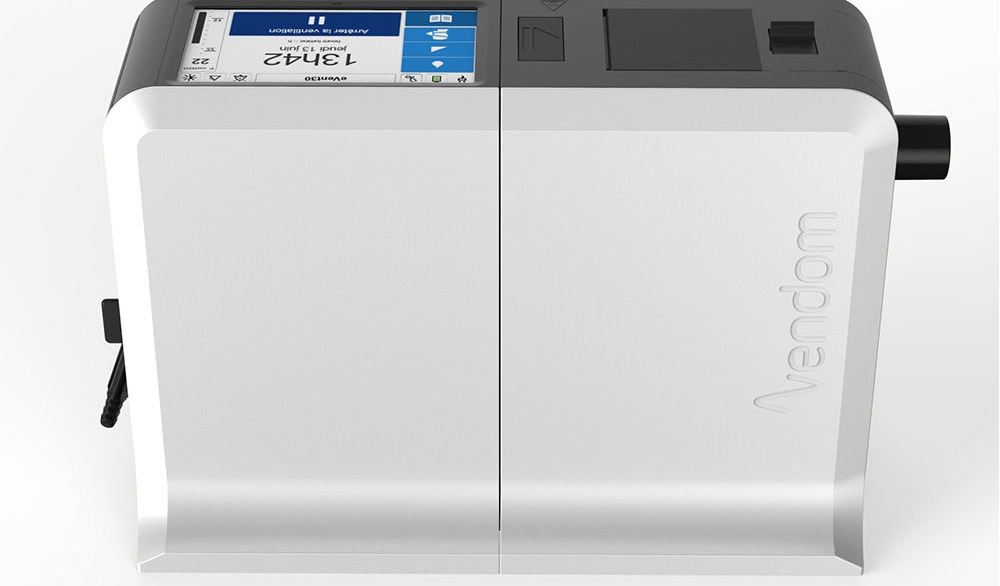When sleep-related breathing disorders are properly treated, patients sleep better and, as a result, gain a much better quality of life, provided that they are not bothered by the noise of the device, i.e. a ventilator. Air Liquide Medical Systems (a subsidiary of Air Liquide Healthcare) has designed a new ventilator for home use: Vendom (a French acronym for home ventilation). The first version of the device, tested by Cetim, featured a sound power level of 40 dB(A), i.e. 10 dB(A) above the defined objectives.
Redesign the architecture of the casing
Romain Davoine, mechanical designer with Air Liquide Medical Systems explains “As we did not have sufficient competences and vibro-acoustic testing equipment, we called in Cetim”. The Centre conducted a first vibro-acoustic survey on a prototype and identified areas for improvement. Soon a second prototype version was tested: the improvement in terms of noise level was significant but Air Liquide Medical Systems wanted to go further, for the well-being and comfort of patients. “We had to redesign the architecture of the casing, the installation of the micro-fan on the mounting structure and we also had to modify the noise suppressor that was initially integrated into the air system”, continues Romain Davoine. A hybrid vibro-acoustic model, comprised of a Finite Element Analysis (FEA) and a Statistical Energy Analysis (SEA), made it possible to virtually assess the relevance of the proposed modifications while taking the constraints of the studied concept into account (overall dimensions, pressure losses, weight of the device, etc.). The target acoustic pressure of 30 dB(A) was validated by a test in a semi-anechoic chamber at Cetim. The user tests performed with pilot prototypes revealed another area for improvement: the patients were disturbed by the tonal nature of the noise made by the running device. This defect, corresponding to the appearance of the main frequency of the micro-fan on the sound spectrum, was corrected via psycho-acoustic surveys involving listening to the ventilation and the search for tonal criteria. These surveys were combined with work meant to improve the manufacturing processes of the micro-fan and optimise the materials of the casing. The selected solution was validated by a new pilot prototype and the marketing phase can now start.



